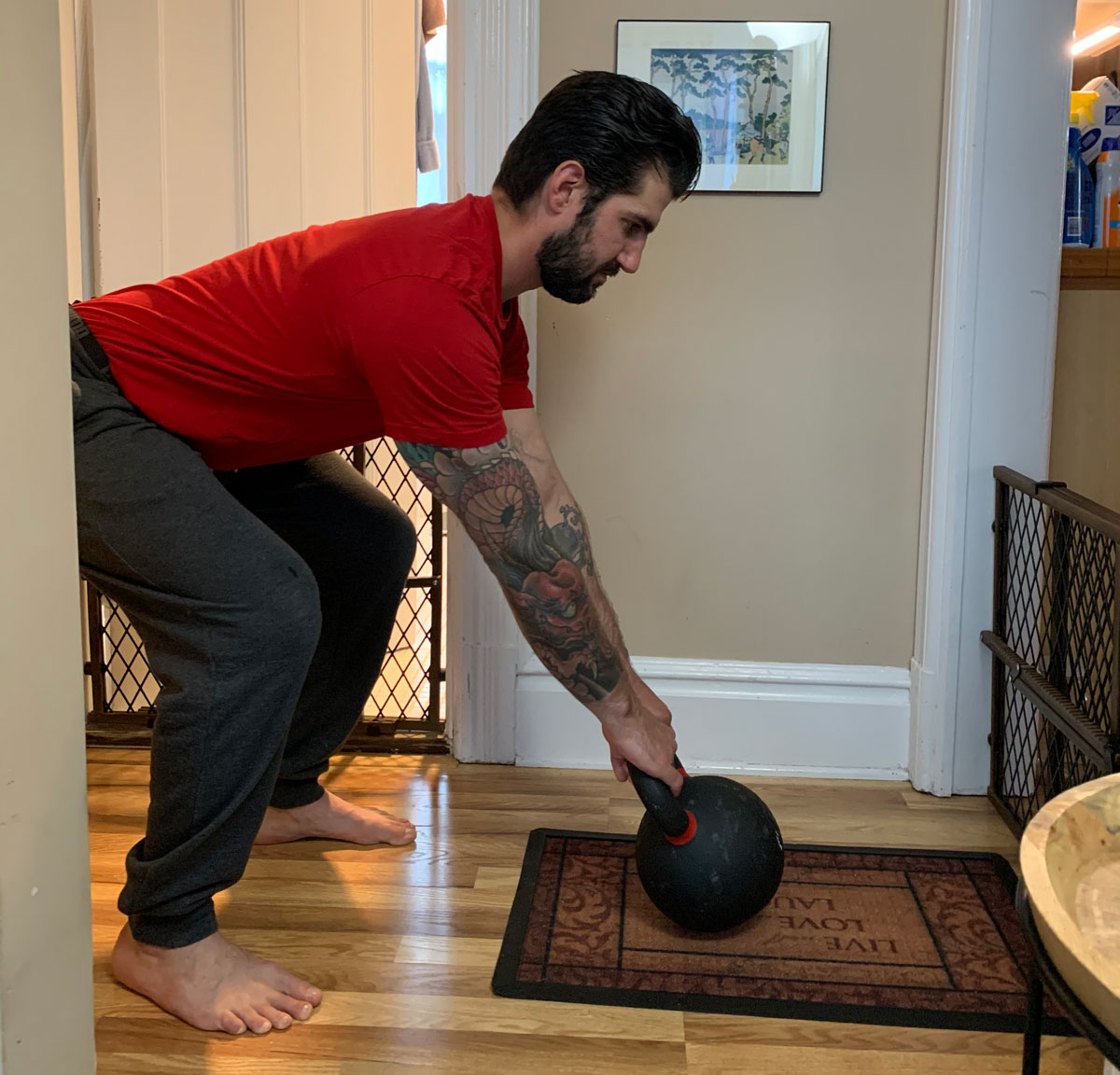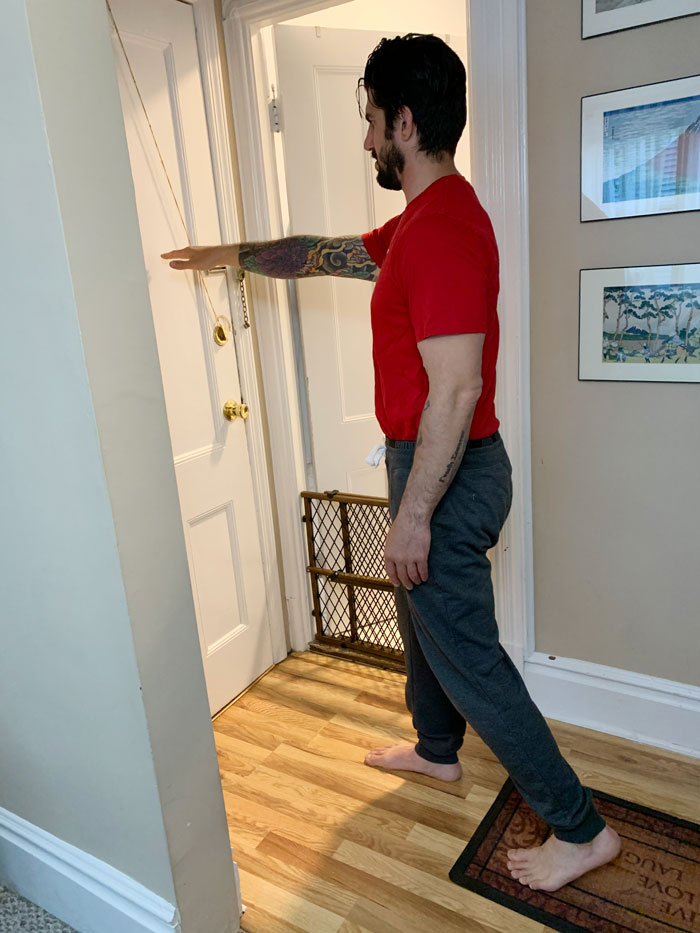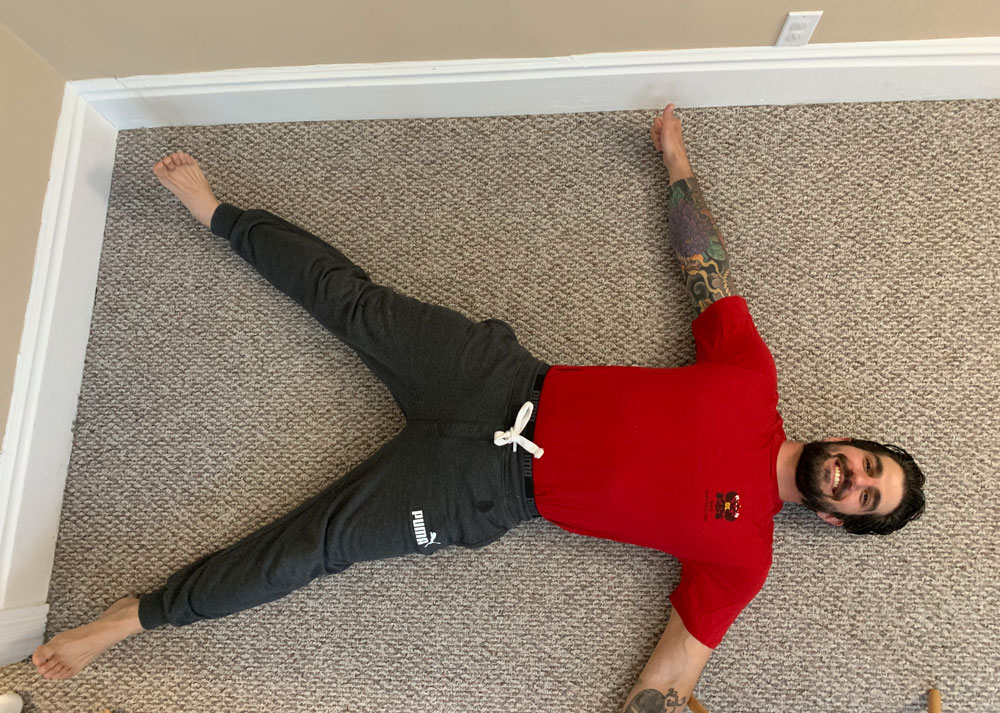
As a co-founder of Catalyst SPORT in NYC, I’ve been exposed to many different people—people just like you.
One of the most common questions I get from both fitness professionals and enthusiasts is, “What is the best piece of equipment I can buy for a home workout?” Being a long-time martial artist, athlete, and strength coach, I have used a plethora of exercise equipment (in the gym and at home). Without a doubt, my answer is always a KETTLEBELL.
With that choice, I wanted to add my top five things to consider for kettlebell workouts at home.
Space & Obstructions:
A significant concern for effective in-home workouts is the amount of physical space required. But, the beauty of using a kettlebell instead of something like a 7.2’ barbell is that you don’t need much space for most of the exercises in your repertoire. If you can lay on your floor with your arms stretched out over your head, you have enough space to do most kettlebell exercises. This much space will be enough for swings, cleans, squats, and most variations of those movements.
To set up for a swing based exercise, I like to consider whatever object (such as a wall or bookcase) which may be confining my space. I walk up to the wall with my arm and hand extended. When my fingertips touch the object, I take a big step back. I’ve now verified that I have the minimum required space in front of me for swinging a kettlebell.
Next, I need to make sure I have enough room behind me for the backswing. To do this, I turn around in place, then reach forward with my arm and fingers. If I cannot touch anything, I have enough space for backswings. Now, you can turn back around and safely swing, clean, and squat away!

Practicing kettlebell snatches requires one more overhead measurement. If you’re a tall person and have low ceilings (or you just aren’t sure), I would always recommend to err on the side of caution and be precise by making an actual measurement. You’ll need a kettlebell, a helper, a tape measure, and a chair. Stand with your arm overhead and your hand open (fingertips facing upward). Have your helper stand on the chair behind you and measure the distance from your middle finger to the ceiling. Record that number. Now measure the height of your kettlebells. Place your kettlebell on its base and measure the height of the bell from the floor to the top of the handle. Comparing your first measure and the height of your kettlebells. Any kettlebell that measures at least an inch or two shorter than the first number you recorded will give you enough clearance to do snatches.
Normally, this should provide you with plenty of extra space overhead, but make sure there are no light fixtures or any obstructions hanging down from the ceiling in the path of your snatch. I always say, better safe than a hole in your ceiling.
Finally, what about the get-up? This one is pretty easy. Lay on the floor and open your legs more than 45 degrees on both sides, then reach your arms out straight from your sides. If you don’t touch or kick anything, then you’re good! Reaching your arms out entirely to the sides may not be necessary, but if you lose control of the kettlebell, you’ll be at less risk of putting a hole in your wall. Next, you need to measure the space above you by standing up with your arm overhead and your hand in a fist. If you don’t touch the ceiling, you have enough room.

Floor Surface:
You may not have too many floor options in your home, but here are some ideas to keep in mind. Generally, any exercise you do standing, you can do on a hard surface like wood, stone, or tile. A hard surface to stand on will give your brain feedback from your feet and the floor. You will also have a stable platform for producing maximal tension and force.
Remember, you are in your home. Try not to aggressively drag or plop your bell down on these surfaces because you may damage them. I suggest standing on the hard surface and placing an area rug, yoga mat, or towel on the floor in front of you; this can serve as a runway for you to start and park your bell.
If you have a room that has a hard rug, this will work as well. My living room (where I do my home workouts) is a hard-packed rug.
It’s a good idea to avoid very thick and squishy rugs. These surfaces make finding the stability you need for a safe workout a difficult, and the feedback from the ground to your feet and brain gets a little lost.
Sweat:
Be aware while working out on hardwood, linoleum, or any shiny floor, your perspiration will make the floor slippery. Have a hand towel ready to help clean up between sets. Conversely, working out on a rug won’t become slippery, but it is more difficult to clean up, so wiping yourself often and doing get-ups on a couple of mats is a good option.
Shake, Rattle & Oops:
When we are doing ballistic movements like swings, cleans, and snatches, we are producing a lot of force right into the floor. In a structure like a house or an apartment, force travels through the floor and will cause items in your room or even rooms next to you to shake. I recommend doing a couple of reps and listening closely for anything that rattles. If you hear something rattle, move or secure that item. On two separate occasions, in two different apartments, I have rattled picture frames off the wall, and one of my wife’s little trinkets off a shelf.
Weight & Exercise Selection:
While working out in your home, choosing the right weight for you, the exercise, and your environment is extra important. I recommend using a weight that you really OWN—or possibly only slightly heavier—during an exercise, so that you don’t lose control or have to bail out of a movement.
The get-up provides an excellent example of why careful weight selection is essential for safe home workouts. Performing a get-up with a bell that is going to be a personal record (PR) or something that you’ve had extreme difficulty completing may not be the best idea at home. For one, you most likely won’t have a spotter, and second, if you do safely bail out, you will probably damage the floor and anything else in the surrounding area that the kettlebell hits. Ouch.
Similar rules apply for your exercise selections. Doing a V02 max style kettlebell snatch workout in your hallway is not a good idea. Remember that unsafe slippery sweat I mentioned before? You probably will not have enough time to catch your breath, let alone responsibly clean up sweat on the floor or yourself. If you lose the kettlebell because of your max output, then where will it go?
Now don’t get me wrong, I want you to work hard and do swings, snatches, and get-ups. I am just telling you to be smart about your weight and exercise selection. If you can workout outside in your yard, then go HAM! But if you are in your hallway or living room, just dial it back a little.
Working out at home is an excellent alternative to the gym. It may seem like you don’t have enough space or equipment, but all you need is a little guidance (which hopefully this article provided) and a kettlebell.
Be safe, aware of your surroundings, and work hard.
***
Joe Boffi, RKC Team Leader can be contacted at Joe@catalystsport.com. For more in-depth guidance from Joe for your workouts, sign-up for Catalyst’s Online Programming.